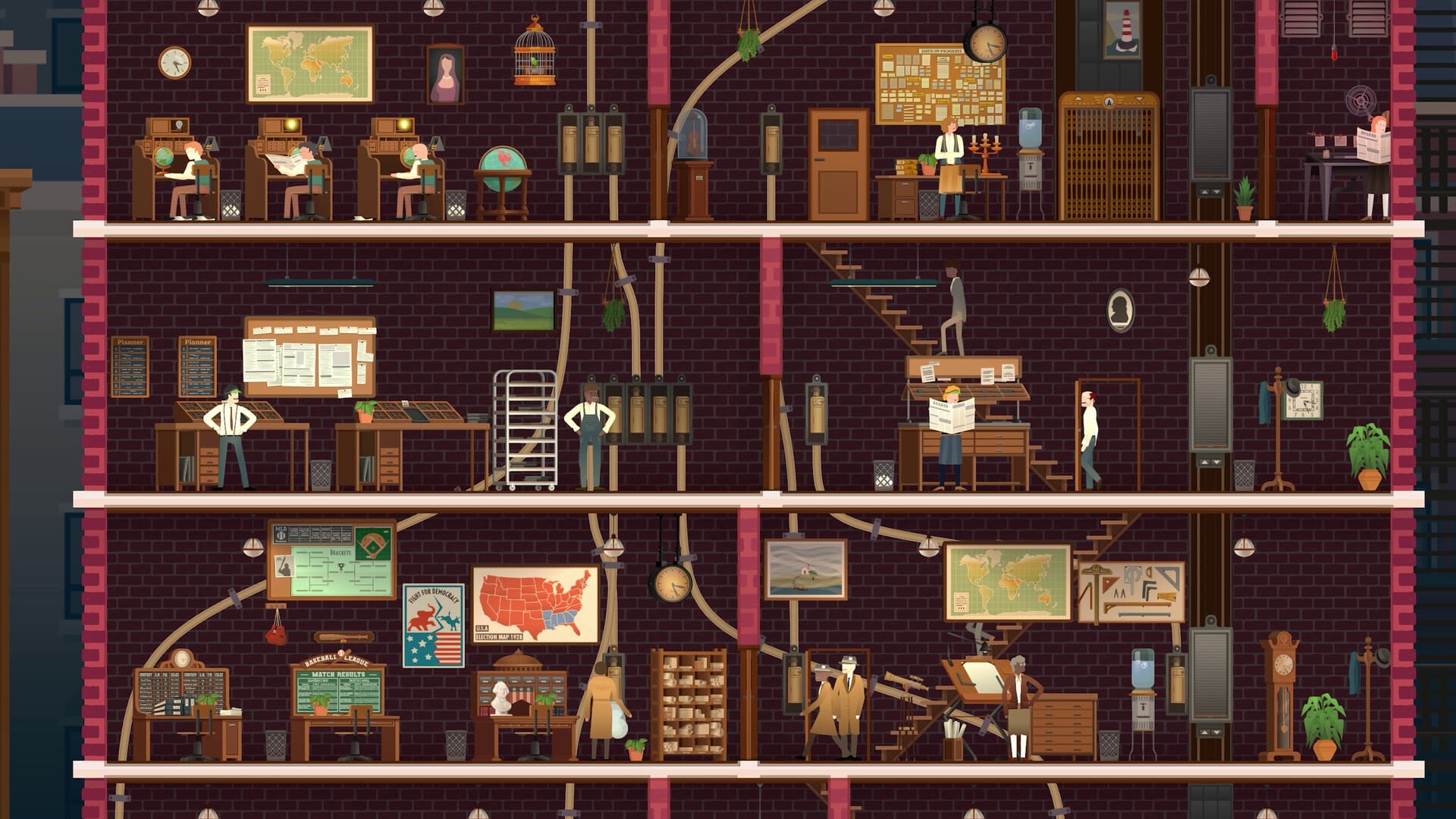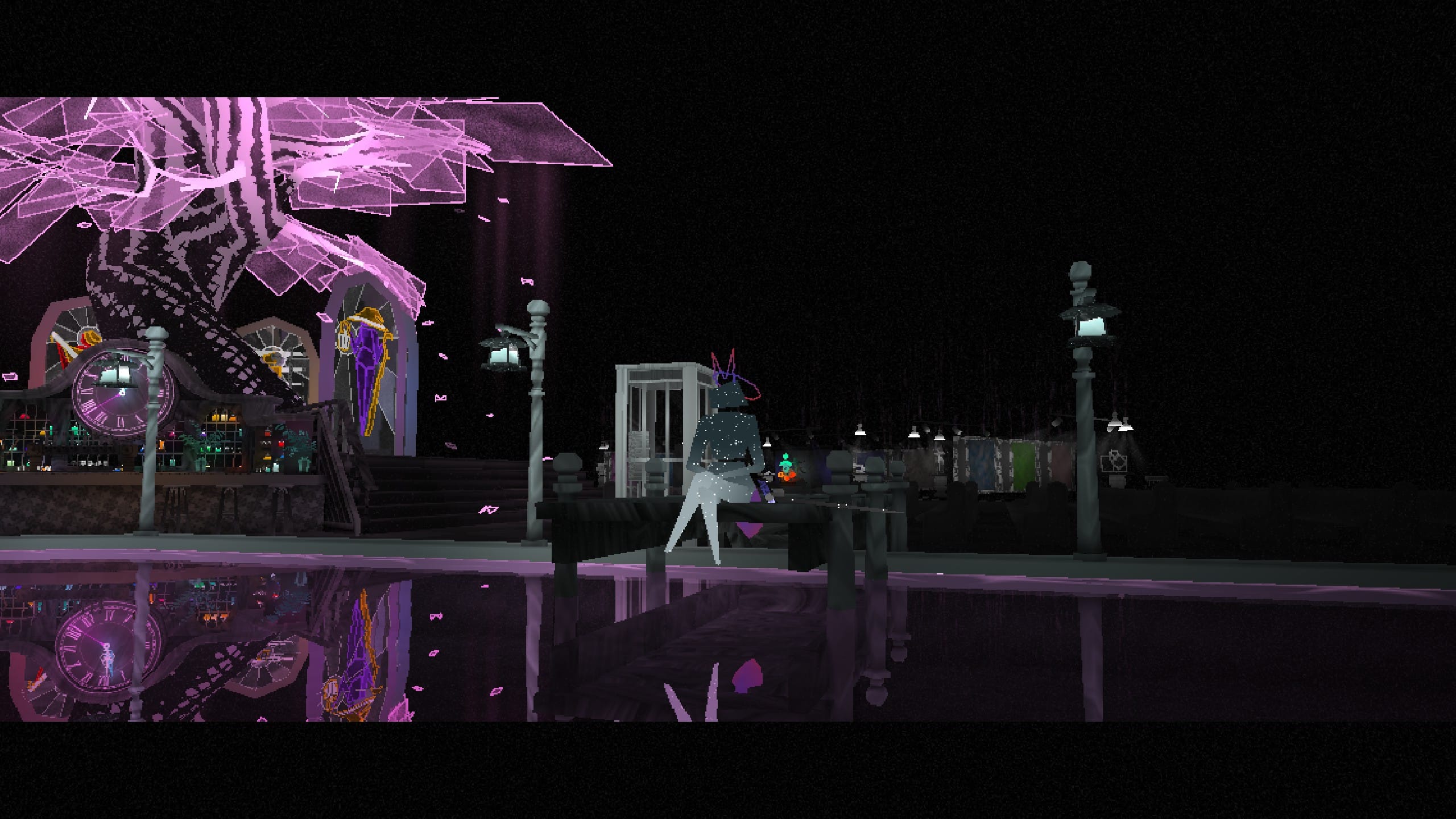I am, I will admit, a Theme Hospital child. Theme Hospital was one of the games I played to death back in the 1990s, always making it roughly halfway through the campaign before failing miserably at one scenario or another, normally the level that had regular earthquakes which damaged all your machinery. Despite Theme Hospital’s somewhat unforgiving learning curve (especially to a kid like me) I loved it deeply, as did my sister. The funny made up diseases like Bloaty Head and the King Complex, the hospital administrator announcements encouraging patients not to die in the corridors, the infectiously simple music. Everything combined to create an intensely memorable and enjoyable game. It’s been 21 long years of hoping that there might be a sequel to Theme Hospital, and now in 2018, we finally have one. Although it’s not an official sequel, Two Point Hospital is as near as damn it a direct follow-up to the original game, and its wears its influences openly on its sleeve.
The premise of Two Point Hospital will be immediately familiar to Theme Hospital veterans, but should also be very easy to pick-up for new beginners. It’s your task to open and run a string of private hospitals, placing the rooms, hiring the staff, discovering illnesses and treating patients, all while hopefully turning a hefty profit. Rather than be subjected to the depression and sadness of real-world diseases, Two Point Hospital follows Theme Hospital’s lead with a variety of hilarious comedy aliments, including light-headedness (where people’s heads are replaced with lightbulbs) and Night Fever, a psychiatric disorder which causes people to dress like John Travolta from the 1977 film. All patient visits follow the same formula; a person arrives, is checked into the hospital by a receptionist, and then visits a GP for an initial diagnosis. If the GP cannot determine the ailment, the patient is sent for further tests in more diagnostic rooms. Once the illness is identified, the patient is finally sent to a treatment room, where they will hopefully be cured. Every ailment has a cure rate which can go up or down depending on your research, the experience and quality of your staff and the available medicines.

Patients can and inevitably will die. Your death-rate impacts your hospital reputation, and the recently deceased will haunt your hospital, scaring patients, until a janitor appropriately vacuums them up. At the end of each year, you’ll be in line for a variety of awards (such as Doctor of the Year or Patient’s Choice Hospital) which will confer certain bonuses. This was present in Theme Hospital as just a static screen, but the way it works here reminds me a lot of The Movies film studio tycoon game, where the Lionhead Motion Picture Awards would grant annual prizes. This makes sense given a number of former Lionhead developers now work at Two Point. The progression is fairly well done, with most levels introducing new rooms, illnesses or problems you need to address. It does feel like the game is easier overall once you’ve got a rhythm going, and certainly better at providing feedback than Theme Hospital was about what you need to be doing. A digital advisor will pop up to offer advice, but unfortunately you can’t turn him off and he will regularly repeat himself.
About 90% of the gameplay of Two Point Hospital is essentially a straight copy of Theme Hospital, but there are some differences. Multiple staff can now be assigned to rooms such as the Ward, which means that more people can be processed through them. The General Diagnosis room is now staffed by a Nurse rather than a Doctor (presumably given the fact that Nurses are these days are often given that responsibility). Managing staff salaries is more straightforward, and staff are promoted when they reach a certain level of experience, opening up more training slots for them to learn new skills. Training, which was a relatively minor element in Theme Hospital, is a little more important here. Some levels start you with very few trained staff, meaning you must gradually train people up in order to properly staff all rooms. For example, Psychiatry requires Doctors trained as Psychiatrists, and the Research Department needs Doctors trained as Researchers. It means employing more doctors and nurses than you actually need, as you’ll require substitute staff to run the hospital while your better trained staff are off getting training.

Visually, Two Point Hospital is delightful. With an art style reminiscent of Aardman Animations films like Wallace and Gromit and Chicken Run, the game has a nice clean look with fluid animations on the characters, who emote wonderfully when afflicted with their various ailments. Musically, there’s a lovely jaunty soundtrack with quite a few catchy tunes, although after a while you may wish it were a tad longer. In yet another Theme Hospital throwback, the sarcastic hospital announcer (who is a sound-alike for the original) is a perennial presence, paging staff to various rooms and reminding patients to pay their bills. Furthermore, the hospital radio station has a number of different DJs and adverts (another idea cribbed from The Movies) which pepper in their commentary ever so often, and feature further silliness.
At the end of the day, Two Point Hospital is not a reinvention of the tycoon genre. Indeed, it’s not particularly complicated as things go. As you start managing larger and larger hospitals with more wards, patients and staff, a lot of time is spent recreating copies of old rooms (something made much easier now they’ve patched in copy/paste) as well as placing new decorative objects around the hospital to increase the appearance and quality score. Most of the time so long as you have sufficient staff and keep them relatively happy, the hospital will more or less run itself, although queues will form for certain rooms more frequently than others. Two Point Hospital isn’t a particularly deep game, but it is nonetheless enjoyable, charming and funny. It’s a nice, relaxed ride through the trials and tribulations of private hospital administration, with a good deal of slapstick and punning comedy thrown in. Ultimately, Two Point Hospital more than lives up to the weight of expectation that comes from being a Theme Hospital spiritual successor.




